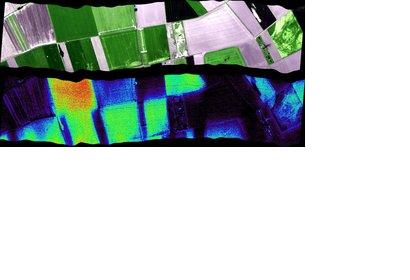A potential new ESA satellite could use the fluorescence in plants to track health and productivity of vegetation worldwide. A likely candidate for the eighth ESA Earth Explorer, the Fluorescence Explorer (FLEX) would thus provide data for global maps of vegetation.
Fluorescence gives an indication of a plant's health as it is emitted during the photosynthetic process. Measuring fluorescence is however challenging. ESA elaborates: "In fact, for years it was a challenge to detect this relatively small glow outside of the laboratory and over agricultural fields and forests."
Germany’s Jülich Research Centre and Finland’s Specim company now successfully developed the sensor Hyplant, which is capable of detecting fluorescence over large areas. It has been tested already in Europe and part of the US and, based on the information, scientists have already created fluorescence maps. ESA campaign coordinator Dirk Schüttemeyer notes, “Hyplant has given us a proven airborne demonstrator that allows us to fully exploit the potential of the FLEX candidate mission."

